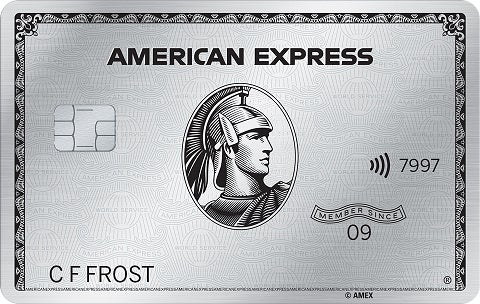Summary
If you’re trying to decide between the Chase Sapphire Reserve and Amex Platinum, the best card for you will likely boil down to the transfer partners you want access to, as well as the benefits you prefer.
The content on this page is accurate as of the posting date; however, some of our partner offers may have expired. Please review our list of best credit cards, or use our CardMatch™ tool to find cards matched to your needs.
Two options stand out from the rest when it comes to premium travel credit cards. The Chase Sapphire Reserve® and The Platinum Card® from American Express offer the most benefits among all travel credit cards and give you the chance to earn a lot more points on your spending over time.
Card details
| Card |  |  The Platinum Card from American Express |
|---|---|---|
| Rewards |
|
|
| Annual fee | $550 | $695 |
| Welcome offer | 60,000 points if you spend $4,000 in first 3 months | 80,000 points if you spend $6,000 in first six months |
Chase Sapphire Reserve vs. Amex Platinum
Airfare and hotel rewards
| Chase Sapphire Reserve | Amex Platinum |
|---|---|
|
|
The winner: Chase Sapphire Reserve
The Amex Platinum lets you earn 5X points on up to $500,000 in flights booked annually with airlines directly or through American Express Travel, as well as 5X points on prepaid hotels booked through American Express Travel.
However, Chase recently added new card benefits to the Sapphire Reserve, upping the rewards rates on travel purchases. With the Sapphire Reserve, travelers earn 10X points on hotel and rental cars as well as 5X on airfare booked through Ultimate Rewards. Note: You must use up your annual $300 travel credit before earning points at their boosted rates. General travel purchases will also give you 3X points.
Though both cards prefer you to book through their issuer travel portals, the Amex Platinum is slightly more restrictive since its 5X points applies to prepaid hotels only and excludes rental cars. Overall, the Sapphire Reserve earns points at higher rates on a broader range of categories than the Amex Platinum.
Points value during redemption
| Amex Platinum | Chase Sapphire Reserve |
|---|---|
| 2.1 cents | 2 cents |
The winner: Chase Sapphire Reserve
Though on average Membership Rewards points are worth slightly more than Ultimate Rewards points (according to Bankrate), holding the Sapphire Reserve Card will allow you to stretch your rewards further when redeeming them.
Based on point value alone, the Chase Sapphire Reserve is easily a better option since the card gives you 50 percent more value when you redeem for travel through the Ultimate Rewards travel portal. This boosted value makes your points worth 1.5 cents each, so you can stretch them considerably further when you’re using the Chase portal to book airfare, hotels, rental cars and more. Further, Chase Ultimate Rewards points are worth 1 cent when you redeem for statement credits, cash back or gift cards.
On the other hand, Amex points are worth 1 cent apiece when redeemed through Amex Travel for airfare and just 0.7 cents apiece when you book prepaid hotels, rental cars, cruises or vacation packages. Likewise, you’ll only get 0.6 cents per point when you redeem for statement credits.
Additional benefits
| Chase Sapphire Reserve | Amex Platinum |
|---|---|
|
|
The winner: Amex Platinum
What the Amex Platinum lacks in rewards potential, it makes up in statement credits and travel benefits. Known for its unique perks, the Platinum Card easily offsets its $695 annual fee with credits alone.
For starters, you’ll get automatic Hilton Honors Gold elite status, which includes free Wi-Fi, late checkout and room upgrades upon availability (enrollment is required in the hotel program). You’ll also get up to $200 annually in Uber credits, which are doled out on a monthly basis. Other annual credits include: up to $200 hotel credit on eligible reservations (minimum two-night stay) on prepaid Fine Hotels + Resorts or The Hotel Collection bookings, up to $200 airline fee credit, $189 credit for a Clear membership and $100 or $85 for a Global Entry or TSA PreCheck application.
The card also gives you access to over 1,200 airport lounges internationally and provides various travel insurances, such as the highly sought-after travel cancellation and interruption insurance.
Other than travel, the Platinum Card’s statement credits also extend to lifestyle. It gives you up to $240 in digital entertainment credit when you use your card for purchases on Peacock, Audible, SiriusXM and The New York Times (enrollment required). You can also enroll for up to $100 credit toward Saks Fifth Avenue purchases and up to $300 credit on eligible Equinox memberships.
Which card should you get?
Though the Chase Sapphire Reserve and the Amex Platinum are the premier travel cards of their respective issuers, they’re quite different. The Sapphire Reserve excels at earning travel rewards at high rates, whereas the Platinum Card’s many statement credits give it its value.
For example, you may want to go with the Chase Sapphire Reserve if you dine out often and want to rack up more points, or if you frequently fly with Southwest or United Airlines. Conversely, the Amex Platinum Card could be a better option if you make frequent purchases or are enrolled in Audible and New York Times memberships, or if you often fly with Delta Air Lines or obscure international carriers.
- If you want more transfer partners: It’s widely found that the Chase Ultimate Rewards program has better transfer partners than American Express Membership Rewards. Not only that, but all Chase transfer partners let you transfer your points over at a 1:1 ratio, whereas only most of the Amex transfer partners do. Also, be aware that Chase lets you transfer your points to the Southwest Rapid Rewards program, which is largely regarded as the most family-friendly frequent flyer program nationwide.
- If you are a flexible traveler: We recommend the Sapphire Reserve since it’s a more well-rounded travel card. You can use the $300 travel credit you get with the Chase Sapphire Reserve toward any type of travel you charge to your credit card. The Amex Platinum’s $200 airline fee credit, however, is only for travel incidentals, such as seat selection and checked bags. Not only that, but you have to select a single airline for your travel credit, so it applies only when you fly with that one airline. The credit also won’t roll over if you don’t use it.
- If you like to travel in comfort: The Platinum Card easily offers the best lounge access of any credit card, and that’s especially true when you compare it to the Chase Sapphire Reserve. Both cards give you a complimentary Priority Pass Select membership, which lets you use more than 1,200 airport lounges around the globe. However, the Amex Platinum gives you access to considerably more airport lounges — and luxury ones at that, such as the Delta Sky Clubs and Centurion Lounges.
Bottom line
There’s no right answer for everyone when you’re comparing the Chase Sapphire Reserve and the Amex Platinum. The right card for you really depends on which cardholder benefits you’ll use and how you plan to redeem your rewards.
Meanwhile, you should also look at each card’s rewards rate to determine which one might leave you with more points at the end of the year. Both of these travel credit cards can be lucrative in their own right, but there’s a good chance one of them will give you better value over time.
Editorial Disclaimer
The editorial content on this page is based solely on the objective assessment of our writers and is not driven by advertising dollars. It has not been provided or commissioned by the credit card issuers. However, we may receive compensation when you click on links to products from our partners.






